Injection Molding Molds & Part molded
1-2 hours injection molding fast quote
Parts delivery in as short as 15 days
Lifetime warranty on molds
Injection Molding - Professional Processing/Custom Service
Injection molding is a method of producing shapes for industrial products. Products usually use rubber injection molding and plastic injection molding. Injection molding can also be divided into injection molding and die casting.
Injection molding machine (referred to as injection machine or injection molding machine) is the main molding equipment for making thermoplastic or thermosetting materials into various shapes of plastic products using plastic molding molds. Injection molding is achieved by injection molding machines and molds.
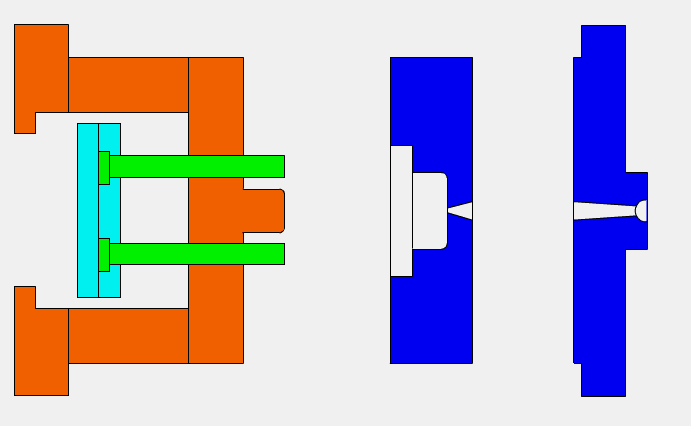
What is injection molding ?
Injection molding is a molding method of injection and molding. The advantages of the injection molding method are that the production speed is fast, the efficiency is high, the operation can be automated, there are many varieties of colors, the shape can be from simple to complex, the size can be from large to small, and the size of the product is accurate, the product is easy to replace, and it can be formed into complex shapes. Parts, injection molding is suitable for mass production and complex shape products and other molding processing fields.
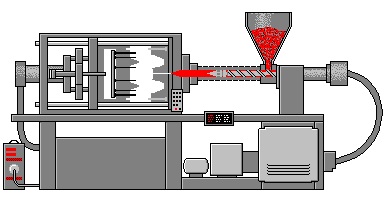
At a certain temperature, the completely molten plastic material is stirred by a screw, injected into the mold cavity with high pressure, and cooled and solidified to obtain a molded product. This method is suitable for mass production of complex-shaped parts, and is one of the important processing methods.
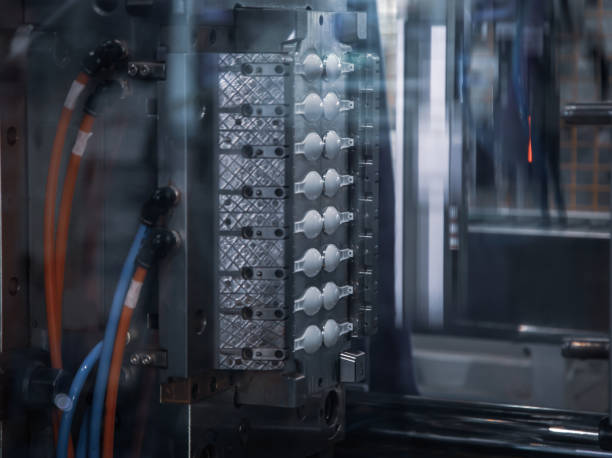
The history of injection molding
In 1868, Hayat developed a plastic material that he named celluloid. Celluloid was invented by Alexander Parks in 1851. Hyatt improved it so that it could be machined into finished shapes. Hayat and his brother Isaiah patented the first plunger injection machine in 1872. This machine is relatively simple than those used in the 20th century. It basically runs like a giant hypodermic needle. This giant needle (diffusion barrel) injects plastic into the mold through a heated barrel.
The Second World War in the 1940s created a huge demand for inexpensive, mass-produced products. , low-cost, mass-produced products.
In 1946, American inventor James Watson Hendry built the first injection molding machine, which allowed more precise control over the injection speed and quality of the produced items. The machine also enables mixing of materials prior to injection, so that colored or recycled plastics can be thoroughly mixed to inject virgin material. In 1951 the United States developed the first screw injection machine, it did not apply for a patent, this device is still in use.
In the 1970s, Hendry went on to develop the first gas-assisted injection molding process and allowed the production of complex, hollow products that cooled rapidly. This greatly increases design flexibility as well as the strength and end-point of manufactured parts, while reducing production time, cost, weight and waste.
Injection Molding Process
(1). Temperature Control
1) . Barrel temperature: The temperature that needs to be controlled in the injection molding process includes barrel temperature, nozzle temperature and mold temperature. The first two temperatures mainly affect the plasticization and flow of plastics, while the latter temperature mainly affects the flow and cooling of plastics. Each plastic has a different flow temperature. For the same plastic, due to different sources or grades, its flow temperature and decomposition temperature are different. This is due to the difference in average molecular weight and molecular weight distribution. The plasticizing process in the machine is also different, so the selection of the barrel temperature is also different.
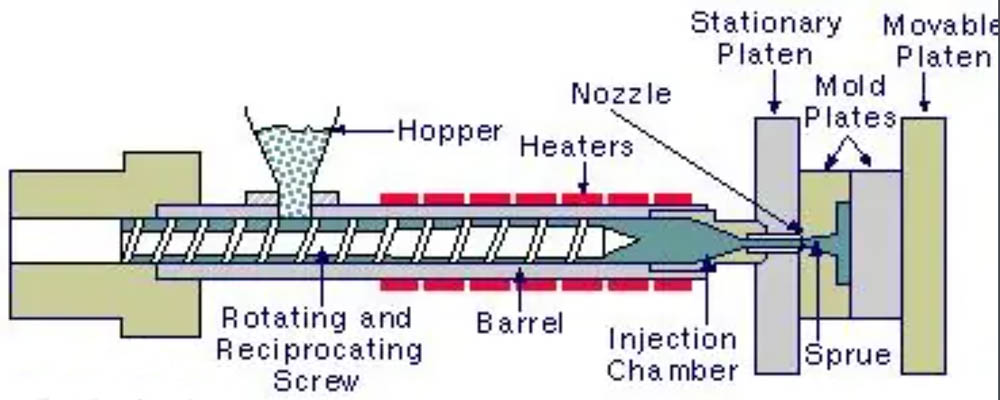
2) . Nozzle temperature: The nozzle temperature is usually slightly lower than the maximum temperature of the barrel, which is to prevent the “drooling phenomenon” that may occur in the straight-through nozzle. The temperature of the nozzle should not be too low, otherwise it will cause the premature solidification of the melt to block the nozzle, or the performance of the product will be affected due to the injection of the early solidified material into the mold cavity.
3) . Mold temperature: The mold temperature has a great influence on the intrinsic properties and apparent quality of the product. The temperature of the mold depends on the presence or absence of plastic crystallinity, the size and structure of the product, performance requirements, and other process conditions (melt temperature, injection speed and injection pressure, molding cycle, etc.).
(2). Pressure Control
The pressure in the injection molding process includes plasticizing pressure and injection pressure, and directly affects the plasticization of plastics and the quality of products.
1) . Plasticizing pressure: (back pressure) When a screw injection machine is used, the pressure on the top of the screw when the screw rotates and retreats is called plasticizing pressure, also known as back pressure. The magnitude of this pressure can be adjusted by the relief valve in the hydraulic system. In injection, the size of the plasticizing pressure needs to be changed with the design of the screw, the requirements of product quality and the type of plastic. If these conditions and the rotational speed of the screw are unchanged, increasing the plasticizing pressure will strengthen the shearing. The effect is to increase the temperature of the melt, but it will reduce the efficiency of plasticization, increase the reverse flow and leakage flow, and increase the driving power.
In addition, increasing the plasticizing pressure can often make the temperature of the melt uniform, the mixing of the colorant is uniform, and the gas in the melt can be discharged. In general operation, the decision of plasticizing pressure should be as low as possible under the premise of ensuring the quality of the product. The specific value varies with the variety of plastic used, but usually rarely exceeds 20 kg/cm 2.
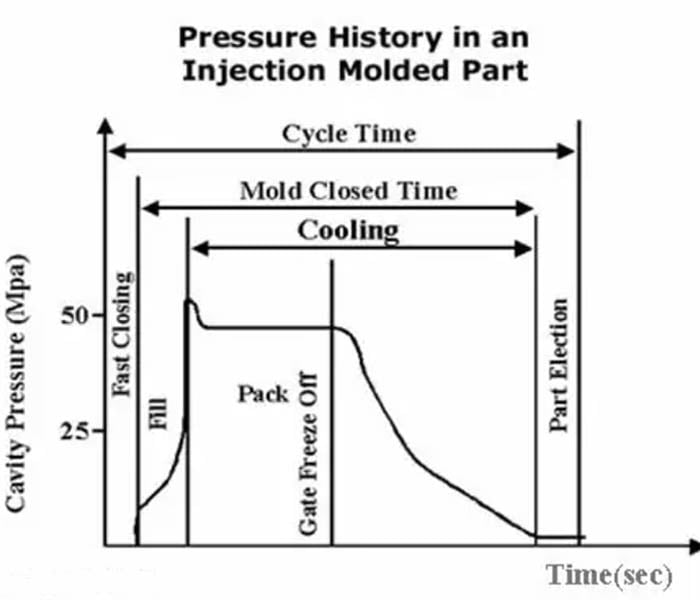
2) . Injection pressure: In the current production, injection pressure of almost all injection machines is the top of plunger or screw to the plastic.
The applied pressure (converted from the oil circuit pressure) shall prevail. The role of injection pressure in injection molding is to overcome the flow resistance of plastic flowing from the barrel to the cavity, give the melt filling rate and compact the melt.
(3). Molding Cycle
The molding cycle refers to the total time required for the injection molding machine to complete a plastic part. In a molding cycle, each moving part of the injection device and the clamping device of the injection molding machine moves in sequence in a predetermined order. In order to facilitate the analysis of the injection molding process, the molding cycle can be divided into two parts: the molding operation stage and the auxiliary operation stage.
The time required to complete an injection molding process is called the molding cycle, also known as the molding cycle. It actually includes the following parts: Molding cycle: The molding cycle directly affects labor productivity and equipment utilization. Therefore, in the production process, the relevant time in the molding cycle should be shortened as much as possible under the premise of ensuring the quality. In the whole molding cycle, the injection time and cooling time are the most important, they have a decisive influence on the quality of the product. The filling time in the injection time is directly inversely proportional to the filling rate, and the filling time in production is generally about 3-5 seconds. The pressure holding time in the injection time is the pressure time for the plastic in the cavity, which accounts for a large proportion of the entire injection time, generally about 20-120 seconds (the extra thick parts can be as high as 5-10 minutes). Before the molten material at the gate is frozen, the amount of pressure holding time has an impact on the dimensional accuracy of the product, and if it is later, it has no effect.


The dwell time also has a best value, which is known to depend on the material temperature, mold temperature, and the size of the sprue and gate. If the dimensions of the sprue and gate and the process conditions are normal, usually the pressure value with the smallest fluctuation range of product shrinkage shall prevail. The cooling time is mainly determined by the thickness of the product, the thermal and crystalline properties of the plastic, and the mold temperature. The end of the cooling time should be based on the principle of ensuring that the product does not change when demoulding. The cooling time is generally between 30 and 120 seconds. If the cooling time is too long, it is not necessary, which not only reduces the production efficiency, but also affects the complex parts. Difficulty in demolding, and even demolding stress will occur when demoulding is forced. The other time in the molding cycle is related to whether the production process is continuous and automated, and the degree of continuous and automated.
Injection Molding Parameter
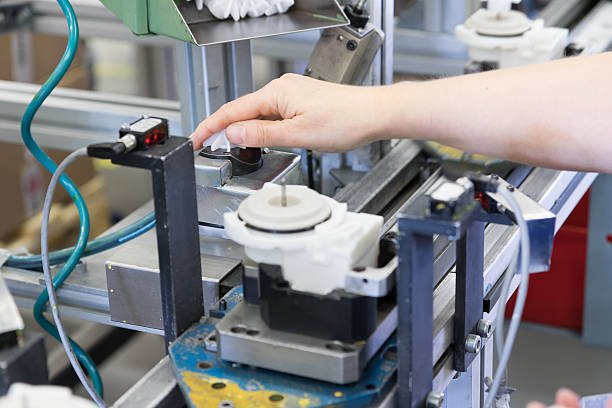
(1). Injection Pressure
The injection pressure is provided by the hydraulic system of the injection system. The pressure of the hydraulic cylinder is transmitted to the plastic melt through the screw of the injection molding machine. Under the pressure of the plastic melt, it enters the vertical flow channel of the mold through the nozzle of the injection molding machine (it is also the main flow channel for some molds), the main flow channel, and the shunt. This process is called the injection molding process, or the filling process. The existence of pressure is to overcome the resistance in the melt flow process, or conversely, the resistance in the flow process needs to be offset by the pressure of the injection molding machine to ensure the smooth progress of the filling process.
During the injection molding process, the pressure at the injection molding machine nozzle is the highest to overcome the flow resistance of the melt throughout the process. After that, the pressure gradually decreases along the flow length to the wave front at the front of the melt. If the inside of the cavity is well vented, the final pressure at the front of the melt is atmospheric pressure.
There are many factors that affect the melt filling pressure, which can be summed up in three categories:
(1). Material factors, such as the type of plastic, viscosity, etc.;
(2). Structural factors, such as the type, number and location of gating system, the shape of the cavity of the mold and the thickness of the product;
(3). Molding process elements.
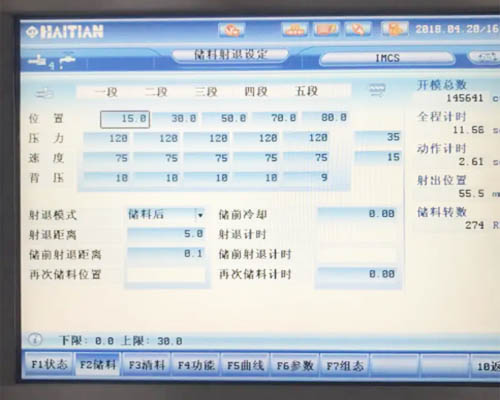
(2). Injection Time
The injection time mentioned here refers to the time required for the plastic melt to fill the cavity, excluding auxiliary time such as mold opening and closing. Although the injection time is very short and has little impact on the molding cycle, the adjustment of the injection time has a great effect on the pressure control of the gate, runner and cavity. Reasonable injection time helps to fill the melt ideally, and is of great significance for improving the surface quality of the product and reducing dimensional tolerances.
The injection time is much lower than the cooling time, which is about 1/10~1/15 of the cooling time. This rule can be used as the basis for predicting the total molding time of the plastic part. In the mold flow analysis, only when the melt is completely driven by the screw to fill the cavity, the injection time in the analysis result is equal to the injection time set in the process conditions. If the holding pressure switch of the screw occurs before the cavity is full, the analysis result will be greater than the setting of the process conditions.
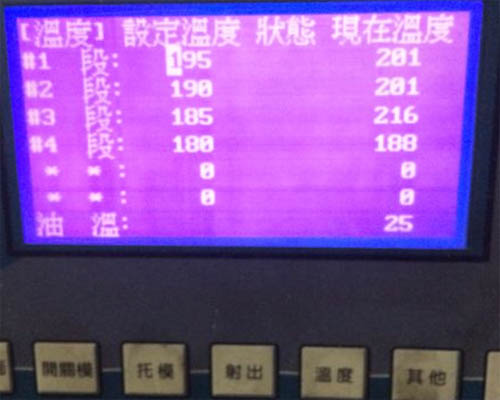
(3). Injection Temperature
Injection temperature is an important factor affecting injection pressure. The barrel of the injection molding machine has 5 to 6 heating sections, and each raw material has its appropriate processing temperature (for the detailed processing temperature, please refer to the data provided by the material supplier). The injection temperature must be controlled within a certain range. If the temperature is too low, the plasticization of the melt will be poor, which will affect the quality of the molded parts and increase the difficulty of the process; if the temperature is too high, the raw materials will be easily decomposed.
In the actual injection molding process, the injection temperature is often higher than the barrel temperature, and the higher value is related to the injection rate and the properties of the material, up to 30 °C. This is due to the high heat generated by the shearing of the melt through the injection port. There are two ways to compensate for this difference in mold flow analysis, one is to try to measure the temperature of the melt when the melt is injected into the air, and the other is to include the nozzle in the modeling.
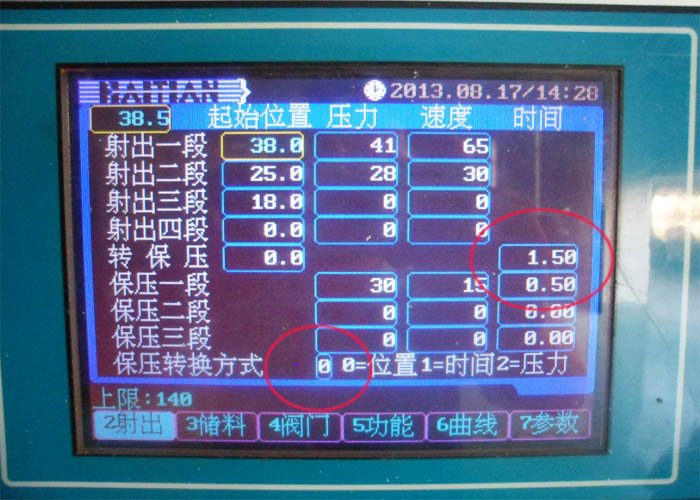
(4). Holding pressure and time
At the end of the injection molding process, the screw stops rotating and just pushes forward. At this time, the injection molding enters the pressure-holding stage. During the pressure holding process, the nozzle of the injection molding machine continuously replenishes the cavity to fill the volume vacated by the shrinkage of the part. If the cavity is filled and the pressure is not maintained, the part will shrink by about 25%, especially the rib will form shrinkage marks due to excessive shrinkage. The holding pressure is generally about 85% of the maximum filling pressure, of course, it should be determined according to the actual situation.
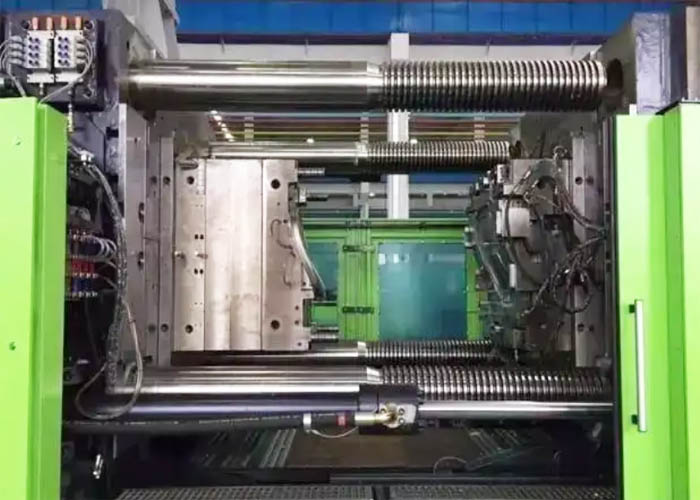
(5). Back Pressure
Back pressure refers to the pressure that the screw needs to overcome when the screw is reversed and withdrawn to store the material. The use of high back pressure is conducive to the dispersion of the color material and the melting of the plastic, but at the same time, it prolongs the retraction time of the screw, reduces the length of the plastic fiber, and increases the pressure of the injection molding machine. Therefore, the back pressure should be lower, generally not more than the injection molding machine. 20% of the pressure. When injection molding foam, the back pressure should be higher than the pressure created by the gas, otherwise the screw will be pushed out of the barrel. Some injection molding machines can program back pressure to compensate for the reduction in screw length during melting, which reduces heat input and reduces temperature. However, because the results of such changes are difficult to estimate, it is not easy to make corresponding adjustments to the machine.
Injection Molding Defect Resolution
The injection molding process is a complex complex involving many factors such as mold design, mold manufacturing, raw material characteristics and raw material pretreatment methods, molding process, injection molding machine operation, etc., and is closely related to processing environmental conditions, product cooling time, and post-processing technology. Manufacturing processes. Therefore, the quality of the product is not only determined by the injection molding accuracy and measurement accuracy of the injection molding machine, or only by the pros and cons of the mold design and the accuracy level of the mold processing. Usually, it is also affected by the above-mentioned other factors and Constraints.
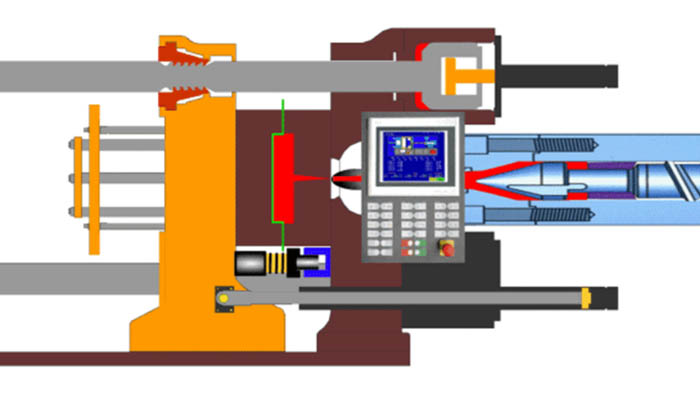
Under the constraints of so many complex factors, the occurrence of defects in injection molding products is inevitable. Therefore, the internal mechanism of defects is sought and the location and type of defects that may occur in products are predicted, and used to guide mold design and improvement, and summarize defects. It is particularly important to formulate the rules of production and formulate more reasonable process operating conditions. We will explain the mechanism and solution of injection molding defects from three main factors that affect the characteristics of plastic materials, mold structure, injection molding process and injection equipment during the injection molding process.
Common defect classification of injection molding products
There are various plastic raw materials used in the injection molding process, and the types and forms of mold designs are also varied. In addition, the operator’s familiarity with a specific injection molding machine, as well as the operational skills and practical experience of the workers are also different. At the same time, the objective environment (such as ambient temperature, humidity, and air cleanliness) will also vary with the seasons. These objective and subjective conditions jointly determine the occurrence of defects in injection molded products.
Generally speaking, there are three main aspects to evaluate the performance of plastic products:
1. Appearance quality: including integrity, color and gloss;
2. The accuracy between size and relative position, that is, size accuracy and position accuracy;
3. Mechanical properties, chemical properties, electrical properties, etc. corresponding to the application, that is, functionality
Therefore, if there is a problem due to any one of the above three aspects, it will lead to the generation and expansion of product defects.
Common defect classification of injection molding products
Appearance defects: silver streak discoloration, weld lines
Process problems: flash, shrinkage, lack of glue
Performance issues: warping, embrittlement